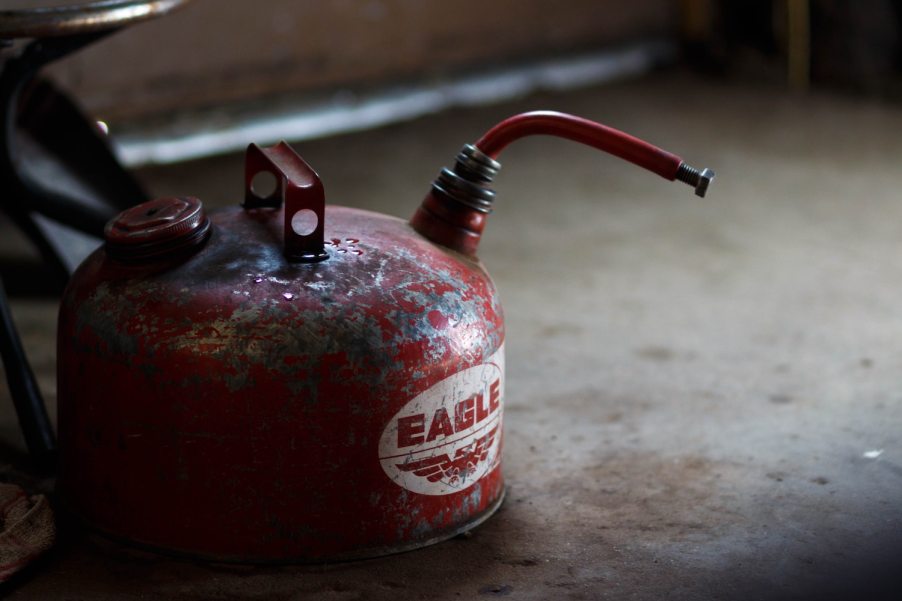
With gas prices skyrocketing, many drivers are trying to maximize their gas mileage. Some are even storing extra gasoline to avoid future price hikes. While hoarding gasoline is a bad idea, it’s important to know how to store your spare gas effectively.
How do you store gasoline at home?
Gasoline is a volatile liquid and degrades quickly. Safely and effectively storing gasoline long-term requires you to pick a stable type of gas, without ethanol. You must use a container that won’t dissolve, usually metal. Finally, you’ll need to mix in a fuel stabilizer.

You can buy a plastic gas can at a gas station, then fill it up with standard pump gas. If you throw it in your trunk, you’ll have a handy reserve of gas–but not for long.
The gasoline will instantly begin to degrade. The plastic of the gasoline storage container will also leech into the fuel. It will lose some of its octane rating every day. In several months it may lose all combustibility.
The most important thing you can do to store gasoline long-term is to pour a fuel stabilizer additive in with the gas. You can buy a bottle of fuel stabilizer at most gas stations. Gasoline mixed with this stabilizer will last much longer.
To make your fuel last as long as possible, you also want to be careful what type of gasoline and what type of storage container you choose.
What’s the best container for long-term gasoline storage?
Metal containers are the stablest solution for long-term gasoline storage. Plastic gasoline cans leech chemicals into stored gasoline and degrade the fuel over time.

A plastic gas can from a gas station is a great short-term storage solution. But it is not a great long-term solution.
If you prefer plastic cans, opt for military-grade plastic gas containers. These gas cans have thicker walls and degrade less than cheap plastic gas cans. One brand that makes military-grade plastic cans is Spectre.
Even better than thick plastic cans are metal gas cans. While metal gas containers will rust eventually, they will still last much longer than their plastic counterparts. Forbes recommends the Eagle galvanized steel gasoline can. Another option is a surplus military gas can, usually a square, 5-gallon container nicknamed a “Jerry” can.
Make certain your container seals properly. If you are worried about air and gas vapor escaping through your gas can’s top, you can create a secondary seal by laying a plastic bag over the can’s opening, then screwing its cap on over this bag.
How long can gasoline be stored?
All gasoline will lose its octane rating over time. According to J.D. Power, Ethanol gasoline can lose its combustibility in just one to three months. Regular gasoline will lose combustibility in three to six months. With a fuel stabilizer, gasoline may last two years.

Are you worried about how long gasoline can last in your tank or in a fuel can? Firstly, you can choose a higher octane of gasoline. 93 Octane premium gas can last 2-3 times longer than regular 87 octane fuel.
Secondly, you can choose gasoline with no added ethanol. Ethanol is a type of organic-based fuel, often made from corn. Gasoline that is 10% or 15% ethanol may be cheaper, but it is more volatile. Therefore, it will degrade more quickly.
Finally, add a fuel stabilizer. A fuel stabilizer is a liquid you purchase by the bottle and pour in with your gas. You can pour it into your gas tank or into a gas can. The mixture will last much longer than just gasoline.
Check out what brand trucks the Russian military drives, or learn more about gasoline storage in the video below:



